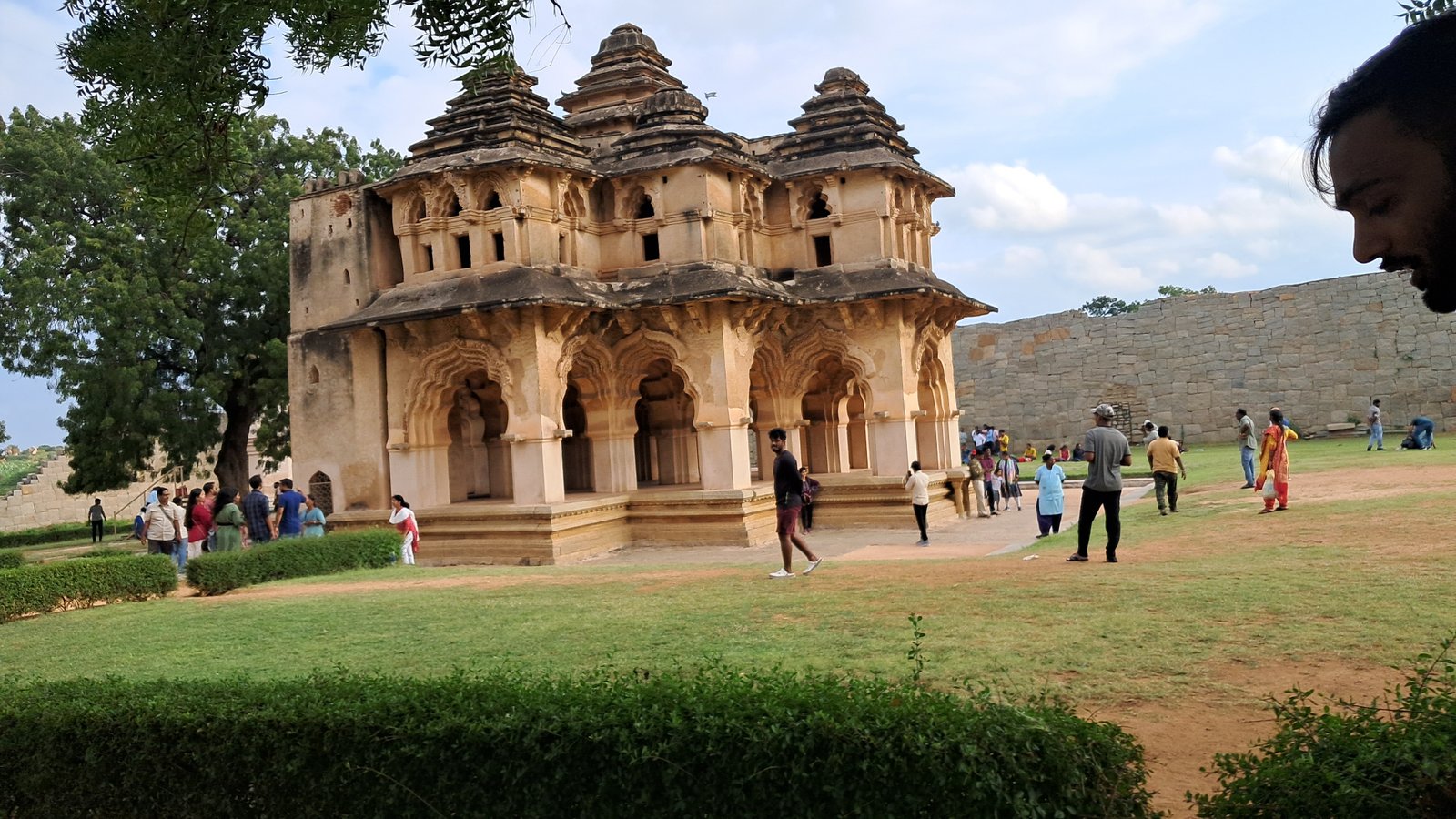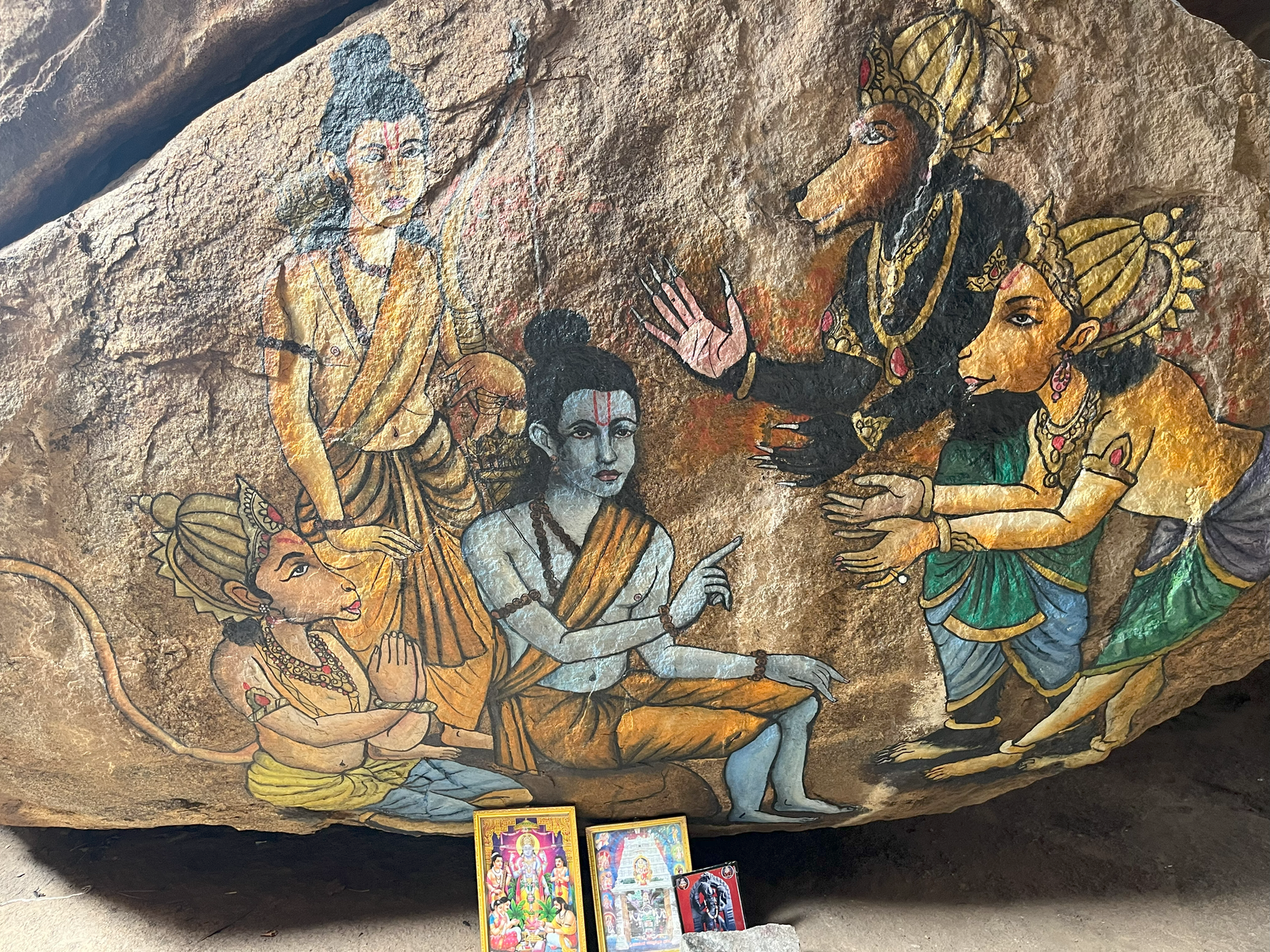Every Indian child grows up hearing stories about the wise and witty Tenalirama. It’s like how every kid from the 90s dreams of going to Disneyland. Similarly, anyone familiar with Tenalirama and Krishnadevaraya would want to explore Hampi. Krishnadevaraya has always been an iconic figure for me in all the stories that begin with “Once upon a time, there was a king…” You might have a different reason for wanting to visit Hampi, but to me, even the smallest reason is enough to make the trip worthwhile. Hampi is a place of natural beauty, rich heritage, and magnificent art and architecture left by our ancestors. Every stone tells a story.

In this, I’m sharing an itinerary and a brief overview of the monuments. Ever since I got my first laptop, I’ve used “Hampi” as my password to keep me motivated. It might sound funny, but it works for me. My long-awaited trip finally became a reality in 2023, and being my first trip, I was filled with excitement as well as concerns about budget, safety, and so on. This trip was crucial because it would shape my future travel plans.




Hampi, nestled in Karnataka, South India, feels like a journey back in time. It’s a World Heritage site filled with ancient ruins and stories etched in stone. Walking among the remnants of a once-majestic empire, with temples, palaces, and ancient marketplaces whispering tales of yesteryears, is like an adventure into India’s illustrious history. Hampi is not just a place on the map; it’s a leap into India’s rich past, offering breathtaking landscapes and remarkable craftsmanship. It’s a must-visit destination for travellers from around the world, drawn to its beauty and historical significance.
How to reach Hampi?

According to the locals, any time is good for a visit, except during the rainy season. UNESCO World Heritage site Hampi is located in India’s southern state of Karnataka. Being a famous tourist destination and also one of the most visited places by foreign tourists, reaching Hampi from anywhere in the world is not an issue. You can travel by air, road, or rail. In my opinion, travelling by train is one of the cheapest, most convenient, and best ways to explore India. If you’re on a tight schedule, then flying is the best option to save time.
I booked my tickets about 15-20 days in advance as I planned to visit during the bustling long weekends. You may find it easier to get train tickets on weekdays, and there’s also the option of Tatkal for last-minute plans.


Stays and Adeventure in Hampi
Staying in Hampi itself is not allowed, so we decided to stay in the nearby Sanapur area. We chose Sanapur for its attractions like cliff jumping, scenic coracle rides at sunset, lush rice fields along the road, and a variety of accommodations from tents to luxury cottages. Additionally, the Sanapur-Hampi road is home to significant spots from Indian mythology, such as Anjaneya Hills (Lord Hanuman’s birthplace) and Sugreev Gufa, making it a perfect base for exploring these revered sites.
After a train trip from Mumbai, Maharashtra, we got to Hosapete at about 1:00 PM. On the journey, we met quite a few people from Maharashtra. Exiting the station, we were greeted by auto rickshaws, offering rides to Sanapur for about 600-900 rupees. We chose to share a ride with some fellow travelers, reducing our fare to roughly 200-250 rupees each.
This shared journey not only cut our costs but also helped us form new friendships. Together, we spent the next two days exploring Hampi. Fortuitously, we shared our return train with these new friends too. This serendipitous event transformed casual acquaintances into lasting friendships. acquaintances into lifelong friends and travel buddies, all while creating lasting memories in Hampi.


Staying directly in Hampi isn’t permitted, so we chose to stay in the nearby Sanapur area instead. We picked Sanapur because it offers exciting activities like cliff jumping, picturesque coracle rides at sunset, lush rice fields along the road, and various types of accommodation ranging from tents to luxury cottages.






Additionally, the road from Sanapur to Hampi is dotted with important sites from Indian mythology, such as the Anjaneya Hills (believed to be Lord Hanuman’s birthplace) and Sugreev Gufa, making it an ideal starting point for exploring these sacred locations.
After a train journey from Mumbai, Maharashtra, we arrived in Hosapete at about 1:00 PM. During our trip, we encountered many people from Maharashtra. Upon exiting the station, we found auto rickshaws ready to take us, quoting a fare of 600-900 rupees to get to our accommodation in Sanapur. We opted to share an auto with other travellers, reducing our fares to about 200-250 rupees each. This not only saved us money but also helped us make friends. Together, we spent the next two days discovering Hampi, and by a happy twist of fate, we ended up on the same return train with our new friends. This serendipity turned our casual encounters into lifelong friendships and travel partners, enriching our experience in Hampi with unforgettable memories.

We were a group of six, staying in three different places. We rented and agreed to meet in the late afternoon to visit Sanapur Lake, sharing our exploration plans. Everyone brought something new to the table, so we tweaked our itineraries to make the most of it. We rented bike for exploration it costs us 300 Per Bike for a day.. let’s explore together.
Day 1: Sanapur Lake and Surrounding Area:


We were a group of six, staying in three different places. We rented and agreed to meet in the late afternoon to visit Sanapur Lake, sharing our exploration plans. Everyone brought something new to the table, so we tweaked our itineraries to make the most of it. We rented bike for exploration it costs us 300 Per Bike for a day.. let’s explore together.
Despite being tired from our journey, we were eager to explore. We headed to Sanapur Lake for a coracle ride and visited a hill near the dam. We enjoyed a beautiful sunset from the coracle ride and then moved towards the hilly top near Sanapur Lake. Cliff Jumping was our attraction, due to sunset we did that next morning.

Day 2: Exploring Hampi ruins and monuments:







After enjoying breakfast at the cottage, our group of six set off for Hampi. We hired an auto for the entire day, which cost us between 1,200 and 1,500 rupees. Our exploration of the Hampi ruins began at the Virupaksha Temple, a truly memorable site. The most fascinating sights for me were the submerged Shiva temple, whose exit emerges outside the village, the resonant musical pillars at the Vijaya Vittala Temple, and the iconic Stone Chariot, now featured on the 50-rupee note of India. Not to be missed is the Hazara Rama Temple, renowned for its exceptional carvings depicting scenes from the Ramayana. The list of wonders is endless, and I intend to share the stories of each in the upcoming article. So engrossed were we in the rich history and splendor of Krishnadevaraya’s empire that we entirely skipped lunch, captivated by the charm of this glorious past.




Day 3: Anjaneya Hills, Birthplace of Hanumana


We rose early and headed towards Anjaneya Hill, revered as the birthplace of Lord Hanuman, with the surrounding area known as Kishkindha, the realm of the Vanaras. The trek up the hill took about 20-30 minutes, but the panoramic view from the summit made it all worthwhile. We took in the breathtaking sights of the Tungabhadra River, ancient temples and ruins, verdant rice fields, and the quaint town below. A well-deserved breakfast awaited us at the base of the hill, where we indulged in a traditional South Indian spread of idli, chutney, sambar, medu vada, and dosa, savoring the authentic flavors with great relish.



With a heart full of indelible memories and a mind teeming with stories, we boarded our train. Yet, my soul lingered amidst the alleys of Hampi, entwined in the tales of Tenali Rama. I remained ensnared in the beauty of Hampi and the captivating stories of Tenali that I had read, as if part of me was still wandering there, lost in the enchantment of that ancient place.



